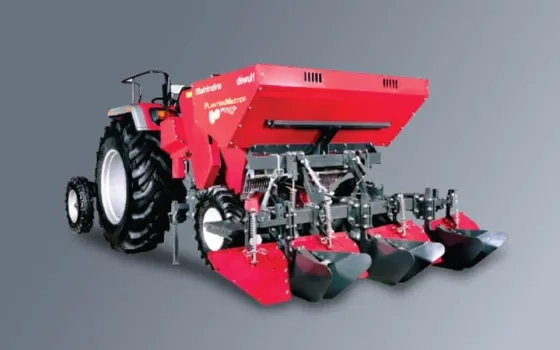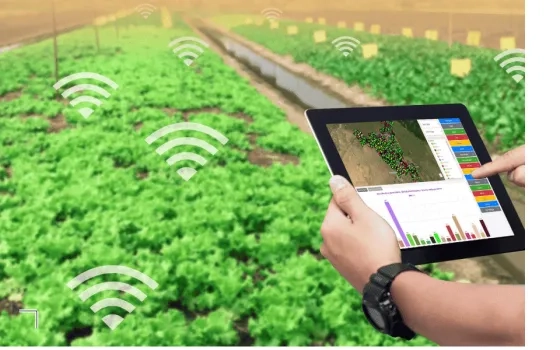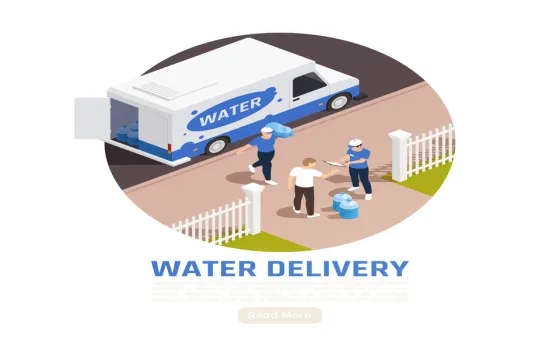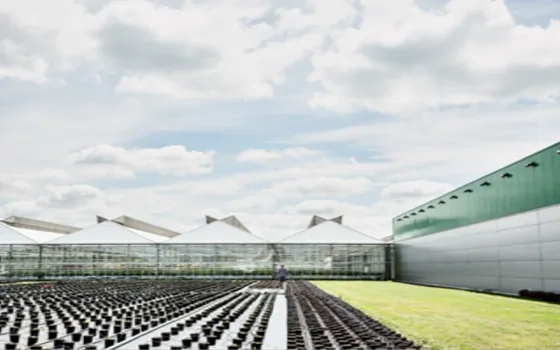#AgriVeda @AgriVeda
Effects are causes. Rewards for superior out-turn in the market motivates a grower for consistent improvement in quality. Fresh produce industry could enter into a virtuous cycle of improvement if positive experiences of consumers are monetized and invested back into the supply chain.
We have traced the journey of fresh-cut produce from the grower’s farm to consumer’s table. The main contributors to a fresh produce supply chain are input suppliers, grower, processor, wholesaler, retailer and consumer. Fresh, safe, natural and crispy products owe their safety and quality to a structured and integrated agriculture supply chain which is discussed in detail in the points below.
Grower’s farm
The preharvest and harvest conditions that affect produce quality and shelf life are related to: genetic factors (variety, strain); external environment (light, temperature, relative humidity, etc.); soil conditions (soil type, pH, moisture, microflora, etc.); cultivation systems (open field, protected, soilless, etc.); agronomic practices (use of fertilizers, pesticides, growth regulators, irrigation, etc.); harvesting (time, temperature, mechanical harvest, manual harvest, etc.).
Agronomists ensure every step to manage the product quality at the farm level. Pre-harvest stress conditions can impact the nutrition density, flavor and shelf life of the produce. Early morning harvesting impact the shelf life of produce because these are typically the coldest hours of the day, and allow for lower temperatures and respiration rates. It is cheaper to keep the produce cool at this time, rather than to cool it when its temperature rises
Harvesting
Produce is tested at the field for maturity, color, size, sweetness and firmness before taking a final call for harvesting. Fresh produce is mostly harvested by hand because of its delicate nature. It is then placed on the crates for transportation to the factory in temperature controlled vehicles. Harvesting the produce at peak maturity ensures higher flavor and vitamin content than ones harvested at low maturity though harvesting at high maturity results in lower shelf life as fresh produce at peak maturity deteriorates more rapidly.
Good preharvest and harvest practices are necessary to reduce any product damage. The cold chain should, in fact, begin as early as possible, and be maintained from the field to the processing plant to preserve the quality of the produce.
Field packing has considerable economic advantages when it is practiced, in that it reduces physical structures, labor and equipment costs, and results in lower levels of crop damage.
Cold Storage (Raw Material)
It is often critical that fresh produce should rapidly reach the optimal temperature for short-term storage or shipping in order to maintain the highest quality, flavor, texture and nutritional content.
After harvesting, fresh produce is placed in the cold rooms to remove field heat and reduce the surface temperature. Temperature and humidity controlled cold rooms ensure that the product quality is retained for longer duration with maximum retention of micronutrients. Time of storage depends on factors like variety and demand. Ethylene sensitive fresh produce like lettuce should not be stored or transported with ethylene generators like apple.
 Cold Storage of Fresh Produce
Cold Storage of Fresh Produce
Cleaning and Washing
The first operation is to remove rejects. This involves the removal of overly mature, inferior sized, severely damaged, deformed or rotten produce.
The processing operations of fresh-cut produce include washing treatments to make the product ready-to-eat. The produce has to be clean, free of soil residue, insects, metals and weeds, and safe. Washing raw material before cutting and during fresh-cut processing is the most effective way of minimizing the risk of presence of pathogens and of any residue left on the produce from harvest and handling conditions
The effectiveness of washing to remove soil impurities and microbial contaminations is related to numerous factors, such as raw material, spoilage, the duration of the washing treatment, the washing water temperature, the method of washing (dipping, rinsing, or dipping/blowing), the type and concentration of the sanitizer and the type of fresh-cut fruit or vegetable. At the moment, the disinfection agents that are used and tested for water sanitation are chlorine, ozone, organic acids, hydrogen peroxide, alcohols, phosphoric acids, UV-C light radiation, ultrasound and others, including combinations of some of them for synergistic effects.
Sorting, Grading and Inspection
The sorting and grading are performed manually by skilled workers. The tables and equipment should have a smooth, soft surface, and the dumping and grading operations should be gentle to minimize injury.
Sorting and grading ensures uniformity of products. Grading simply means different level of standards among the same product and help consumers measure the level of additional value. Producing fresh-cut product involves substantial mechanical injury due to peeling, slicing, dicing, shredding or chopping.
Visual inspection is done by operators and infrared optical selectors. infrared detectors ensure high quality selection standards
Drying: Centrifuge and Air
An important factor for the stability of fresh-cut product is moisture control. After washing, the excess water should be removed from the fresh-cut product before packaging, to prevent rapid microbial development and enzymatic processes that lead to product quality deterioration. Various methods exist to remove washing water, including centrifugation, passing the produce over vibrating screens with air blasts, or blotting. Minimal centrifugation can leave residual water on the product surface, thus favoring microbial growth, while excessive centrifugation can result in cellular damage and cause cellular leakage.
Weighing and Packaging
A special high care zone is established, which requires low temperatures to be maintained along with the application of more stringent hygiene controls. This zone employs the use of the continuous air sanitization process known as ionisation. Low temperature and presence of sanitised air ensure quality of produce is not altered in any way during weighing and packing.
Packaging is not only the final operation of fresh-cut processing that allows the products to be distributed and safely reach the consumers, but also the tool which, together with the cold chain maintenance, allows the quality of fresh-cut product to be preserved and prolongs its shelf life. The aim of packaging is to create an atmosphere that slows produce respiration, so that the minimal necessary O2 concentration or maximum tolerated CO2 concentration of the packaged produce is not exceeded, and both fermentation and other metabolic disorders are avoided.
Packaging with detection system like Metal Detectors (for metallic impurities like steel) and X-ray (for non-metallic impurities like glass) ensures product is free from any foreign body.
Cold Storage
Fresh-cut packaged products need to be stored at low temperatures (7°C) with 95% RH to slow the respiration rate, enzymatic processes and microbial activity. Storage conditions generally refers to the storage or holding temperature, the time/temperature and the RH which the fresh-cut products may encounter. However, other factors can play a role during storage, such as the effectiveness of the packaging material to preserve food safety and quality, the technical characteristics of the storage in the processing plant, and the cold chain implementation from the processing plant to the consumer.
 Cold storage for final fresh-cut product
Cold storage for final fresh-cut product
Quality Analysis
Product quality is guaranteed using chemical, physical, micro-biological and conformity tests. Safety issues of fresh produce comes from pathogenic microorganisms e.g. Clostridium botulinum, E. coli, Salmonella, Listeria monocytogenes, Campylobacter and not from pesticides. Pre-harvest contamination from manure, water and sludge are the major contamination contributors. Quality analysis also involves testing for chemical residues e.g. pesticide, insecticide and fungicide.
Logistics, retail and consumer
Shortly after the packaging phase, all the products are transported, using refrigerated vehicles, either to the distribution platforms or else directly to the points of sale. Transportation in refrigerated trucks ensures freshness during logistics. The whole system ensures that the fresh-cut produce is as fresh as picked at the consumer end.
For consumers, appearance is the most important quality factor with specific emphasis on color. Other factors like taste, texture and freshness comes into the picture when the produce is consumed.
For more details, please feel free to write to admin@agriveda.com
@@#
















